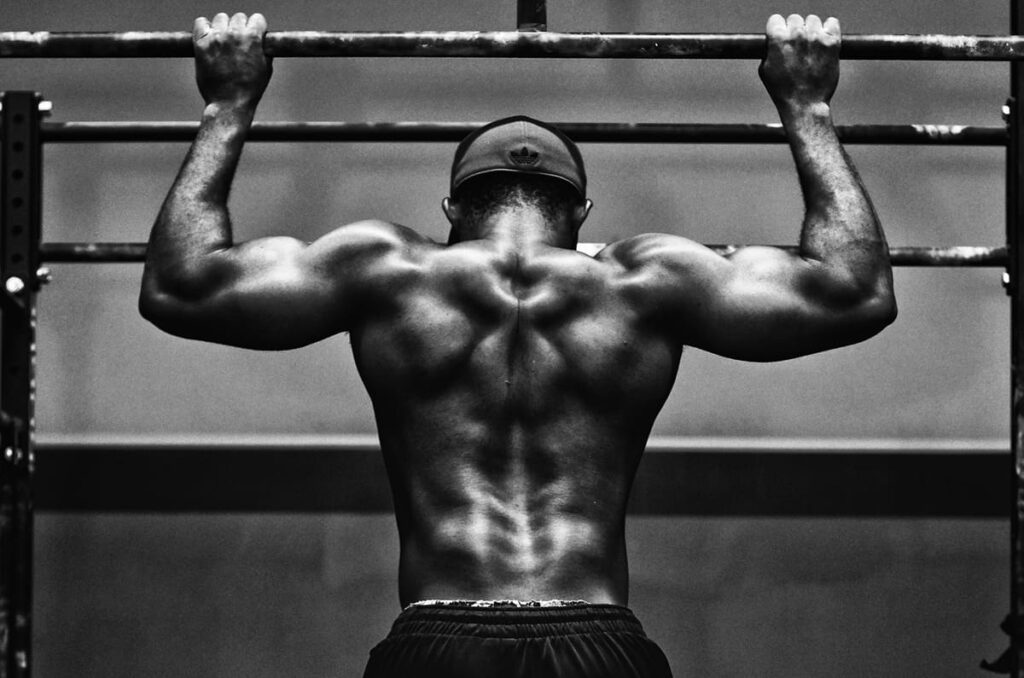Pull-ups are one of the best and most complete compound exercises to build a strong upper body. That is why so many people do them, which in turn is the reason why there are so many mistakes to be made. Here is a list of 9 pull-up mistakes and how to fix them.
The pull-up works mainly on your lats, a big muscle on your back, but it also activates to a certain extent your pecs, teres major, biceps, triceps, and rhomboid, making it one hell of a compound movement for your upper body.
Mike Israetel, a PhD in Sport Physiology and co-founder of Renassaince Periodization, talked about 9 pull-up mistakes and how to fix them in a video. Make sure you take his advice into consideration next time you are about to face the bar.
9 Pull-Up Mistakes and How To Fix Them
Read More: 5 Pull-Up Bar Complexes to Explode Your Strength and Skill
Pull-Up Mistakes and How to Fix Them
Mistake 1 – Not enough range of motion
Go all the way down to a full stretch and, at least, above the bar with your chin. Once you get stronger, try to reach the bar with your clavicle. Ultimately you want to be strong enough and be able to touch the bar with your chest. That is the biggest range of motion.
However, always go all the way down to stretch your arms.
Mistake 2 – Dead hang vs no dead hang
According to Mike Israetel, performing a dead hang or not is fine while doing the pull-up, as long as you go all the way down and stretch your arms. “If you can do a dead hang between each one [rep] you get a little bit of a bonus point as long as your shoulders feel ok.”
Mistake 3 – no standardised range of motion
Take the first mistake and correct it, so you do not make mistake number 3. If you decide on doing pull-ups to the chin, make sure every rep gets to the chin. If you cannot maintain it, stop the set immediately. “Every rep doesn’t have to look identical, but every rep has to hit the bottom portion and the top portion.”
Mistake 4 – uncontrolled eccentric
The descent phase needs to be controlled. Do not just let go of your body when going downwards on the movement. Although not significant, you could injure yourself by doing this.
The ultimate goal is not to do as many pull-ups as you can, but rather focus on technique to increase your muscle hypertrophy and get stronger. The only way to do that is by controlling your eccentric phase because this is when you have the best muscle activation.
Mistake 5 – excessive body English
Utilising anything but your back to generate the momentum when doing pull-ups will switch the stimulus of the exercise away from its goal. “If you’re doing kipping pull-ups for CrossFit, that’s totally cool, but that’s a completely different exercise,” Israetel says.

Mistake 6 – foot position and stability
There is no foot standard, but whatever works with you to keep your body stable when doing pull-ups is recommended. While doing pull-ups, if your body flails around and you need to perform a dead hang at the bottom of the movement before beginning the next rep, you need to switch your foot position.
You can leave your legs straight down or bend your knees, and even cross your legs. Whatever makes your body not move too much while doing pull-ups is what works best for you.
Mistake 7 – letting grip be the limiting factor
If gripping is a limiting factor, you can try 3 different things to help you out. Chalk, straps, or versa grips.
“You can mind-muscle connect with your back that much better, do better of technique, and know that your back and your arms are always a limiting factor and never your grips.”
Mistake 8 – not feeling your back
“If someone says wide grips are the way to grow your lats, you try it and your shoulders hurt, stop doing them,” Israetel begs.
Start with pull-ups that are comfortable for you, there are many variations, with different grips, widths, and even machines you can do. Just make sure you are stimulating your back and not hurting your joints.
Mistake 9 – going too heavy or too light
If you start doing 15 or more reps of one type of pull-up, for example, chin-up to the bar, then you can start moving up to bringing your clavicle to the bar.
If you cannot get many chin-ups on the bar, then you can do assisted pull-ups or pull-downs. “You can use a slightly lighter weight than your body weight to get into those higher rep ranges.”
Read More: 6-Week Training Program for Pull-Ups (Beginner)
Image Sources
- Pull Up: Edgar Chaparro on Unsplash